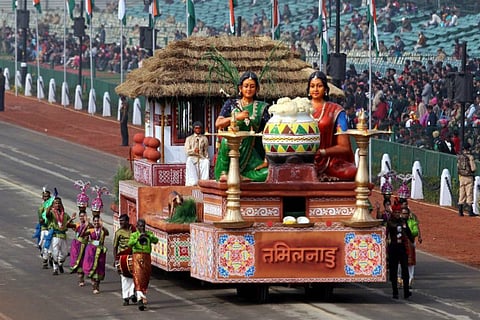

(By Arvind Ilamaran)
I wish to present a short critique on a recent article by Tara Krishnaswamy on the disproportional allocation of resources to the southern states. She has brought to the fore once again, a well-known animosity plaguing the North-South divide in India. Her premise is that Southern States (Andhra Pradesh, Karnataka, Kerala, Tamil Nadu and Telangana) contribute a lot to this nation and are yet unfairly sidelined fiscally and socially. She contrasts this with the low-contribution and high-gain situation of states in Hindi-belt (Bihar, Chhattisgarh, Delhi, Haryana, Himachal Pradesh, Jharkhand, Madhya Pradesh, Rajasthan, Uttarakhand and Uttar Pradesh).
Her conclusion is that collective bargaining may be the only option left for the Southern states to reclaim their fair share of fiscal and social capital. Needless to say the article has attracted friends and foes of all hues. Critics have not lost another opportunity to abuse the writer to show their disagreement.
The purpose of this counter is to highlight the potential issues in discourse from both sides.
Tara Krishnaswamy presents fuming rhetoric and fiscal statistics to show that Southern states continue to contribute a lot in comparison to what they receive in return.
In reference to this point in her article, I just want to emphasize that 30 percent of tax revenue does not run the country. If all other states stopped contributing tax, India cannot meet its budget. Besides the difference in Gross State Domestic Product between the two regions is roughly 0.1% of our current defense budget.
She points out that out of the overall share of grants from the Central government, the Southern states get just 18 percent. I will not agonize the readers with data on social development indicators, which have long been dominated by Southern states. So the Southern states are richer, healthier and better-educated than those in Hindi-belt. If that is the case, what extent of redistribution can be seen as fair? The author makes the claim that 18 percent is unfair. But she does not provide the reader with a rubric to arrive at an objectively fair estimate of redistribution.
Answering these questions requires us to look at a more fundamental question: if a state is plagued by corruption and bad governance like UP or Bihar, till when should other states take the responsibility to reimburse their mistakes? Are the grants given to Special Category Status states conditional on their improvement on pre-defined indicators? Is it time to revise the Gadgil formula again to include more comprehensive and detailed metrics? Should the Niti Aayog devise stronger incentives to put less performing states on a growth trajectory? If the redistribution were any indication of incentives to grow, it might be seen in the light of estimated GSDP growth for Northern states, which is 1.2 percent higher than those for Southern states.
One could argue that this is not good enough. But then such arguments need a clear definition of evaluating criteria, without which these issues simply become open to interpretation.
Most importantly, the framework of redistribution includes North-Eastern states, and Jammu and Kashmir. Even if the Southern States wanted to collectively bargain, they will not be bargaining against the Hindi-belt states but the whole of India. Fiscal reform of such magnitude will require alliances that go well beyond the South.
Her critics have fielded very unfortunate positions as well. One of the primary accusations was that this article was aimed at creating a divide. I fail to understand how to ask one’s fair share of return will destroy India. Unless the idea of India rests upon South Indian states being unfairly treated for eternity.
Secondly, since recorded history, South and North have always thrived as distinct cultures. While North stayed mostly consolidated by Muslim dynasties, the South was ruled by independent kingdoms that were never part of any of the major dynasties in Indian history. Even the empires of Chandragupta Maurya, Ashoka or Akbar did not reach the far end of the South. The distinction extends to other dimensions of society as well – language, literature, music and food. To claim that North and South are cut out of the same cloth is historical ignorance at best and political malice at worst. To ask Southern states to feel a natural obligation to support the Northern states at the cost of its own people cannot be justified, either morally or politically.
India’s rise as a global power rests on strong domestic cooperation. Achieving the vision laid down by 73rd and 74th Amendments may go a long way in resolving inter-state or even intra-state conflicts. Therefore, instead of pitching South vs North, it would be constructive to achieve the larger constitutional progress that would automatically resolve the issue at hand.
At the same time, Northern states cannot continue to misgovern and squander precious resources at the cost of the poor and the needy in Southern states. This debate is far from over. But what is most important is that arguments on both sides should be based on logic and compassion than vain emotions of nationalism and patriotism.
(Note: The views expressed here are the personal opinions of the author.)